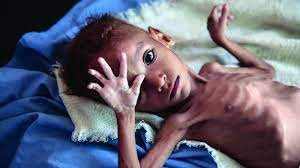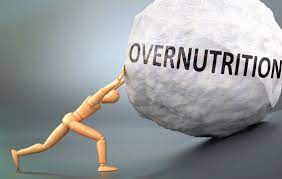What’s Malnutrition and What Does It Do To Your Body
Malnutrition means that you are undernourished, and you do not have enough of all the nutrients your body needs in your diet. It covers two major categories of health conditions, malnutrition and overnutrition. Malnutrition includes four types of health consequences, stunting (low age), weight loss (low height), underweight (low age), and micronutrient deficiency. Overweight, obesity and diet-related non-communicable diseases are the subject of overnutrition [1].
Worldwide, the rate of malnutrition is increasing day by day. It is estimated that 462 million people are underweight and 1.9 billion are overweight. 149 million children under the age of 5 are stunted, 45 million are wasted, 39.8 million are overweight and obese, and 528 million of women of childbearing age are anemia. They can be treated with iron supplementation, balanced diet, and adequate iron [2]][3]. The type of malnutrition depends on the population's resources, lifestyle and environment. The signs and symptoms of malnutrition also depend on its type.
Malnutrition:

Stunting is a condition that occurs due to chronic and recurrent malnutrition. It occurs due to poor health of pregnant women, poor socioeconomic status, frequent illness or improper early feeding of infants and young children.
Weight loss is unintentional and severe weight loss caused by insufficient food intake or infectious diseases such as diarrhea. Moderate and severe wasting children have an increased chance of death, but their treatment is possible.
Children who are underweight are lighter and may be stunted, wasting, or both. It can be treated with proper diet and nutritional care.
Micronutrient deficiencies are more common in malnutrition, such as vitamin A, zinc, iron, and iodine deficiencies.
Overnutrition:
Overweight and obesity are the main signs of overnutrition and may also lead to nutritional deficiencies. According to a study, overweight and obese individuals have insufficient dietary intake and lower levels of vitamins and minerals in their blood compared with individuals of normal weight.

Malnutrition assessment:
Malnutrition is assessed through certain tools used by healthcare professionals
.Actual weight and usual weight
.Body Mass Index (BMI) chart
.Micronutrient blood test
.Physical examination [1].
The role of diet in malnutrition:
If a person loses weight and feels poor appetite, then simply changing meals, snacks, and drinks, by adding extra calories and protein to them, can help. so,
.Three meals a day, three snacks between meals.
.Add protein to each meal, such as fish, chicken, eggs, beans and meat.
.Avoid low-fat and sugar-free foods and drinks.
.Include high-calorie ingredients in your diet, such as butter, cheese, whole milk, olive oil, and cream.
.Add pudding after lunch and dinner, such as custard, cream yogurt, rice pudding or ice cream
.If you don’t want to cook, try ready-to-eat food.
.Choose healthy and nutritious beverages such as milk, juice and smoothies.
Ideas to increase calories and protein in your diet:
.1 cup of whole milk enriched with 4 tablespoons of powdered milk.
.Biscuits and oatmeal cakes with cream, cheese, hummus and avocado.
.Pancakes with butter and jam.
.Creamy yogurt.
.Dried fruits, nuts and seeds.
.Fruits with chocolate sauce and peanut butter.
.Custard, small snacks, rice pudding and chocolate pan, milky jelly and soy yogurt [4] [5].
References:
1-Streit, L. (2018, October 10). Healthline. Retrieved November 4, 2021, from Malnutriton: https://www.healthline.com/nutrition/malnutrition
2-World Health Organization. (2020, April 15). Malnutrition. Retrieved November 4, 2021, from World Health Organization: https://www.who.int/news-room/q-a-detail/malnutrition
3-World Health Organization. (2021, june 9). Malnutrition. Retrieved November 4, 2021, from World Health Organization: https://www.who.int/news-room/fact-sheets/detail/malnutrition
4-NHS. (2020, February 7). Overview Malnutriton. Retrieved November 4, 2021, from NHS: https://www.nhs.uk/conditions/malnutrition/
5-NHS inform. (2021, May 17). Malnutrition. Retrieved November 4, 2021, from NHS inform: https://www.nhsinform.scot/illnesses-and-conditions/nutritional/malnutrition


